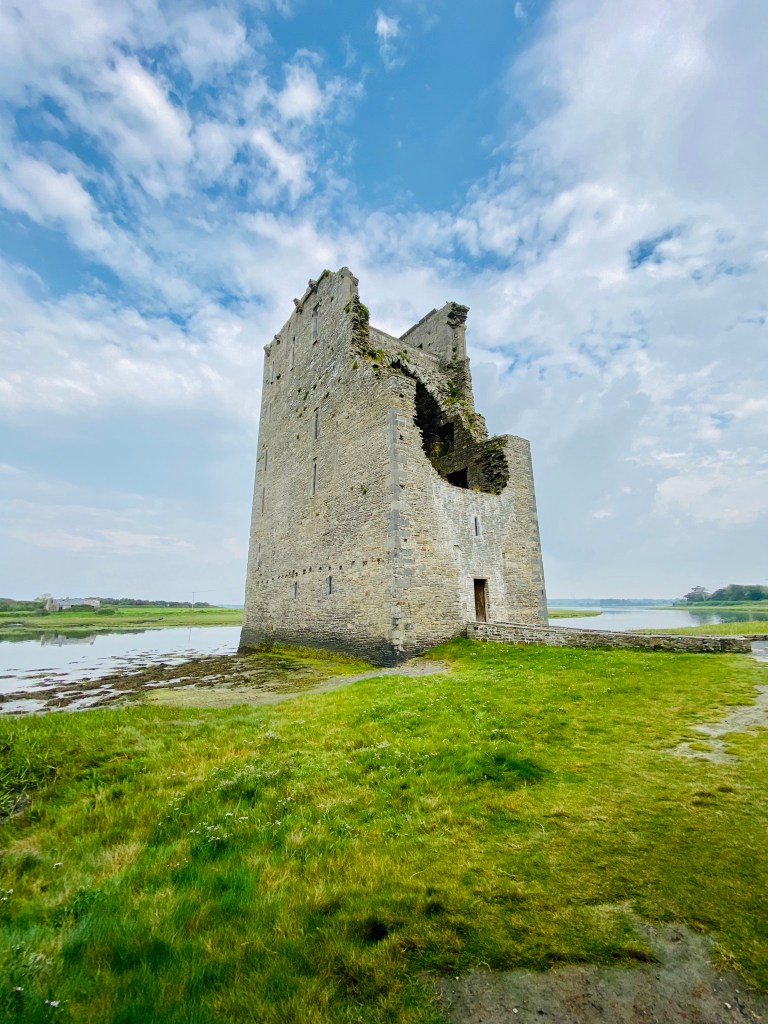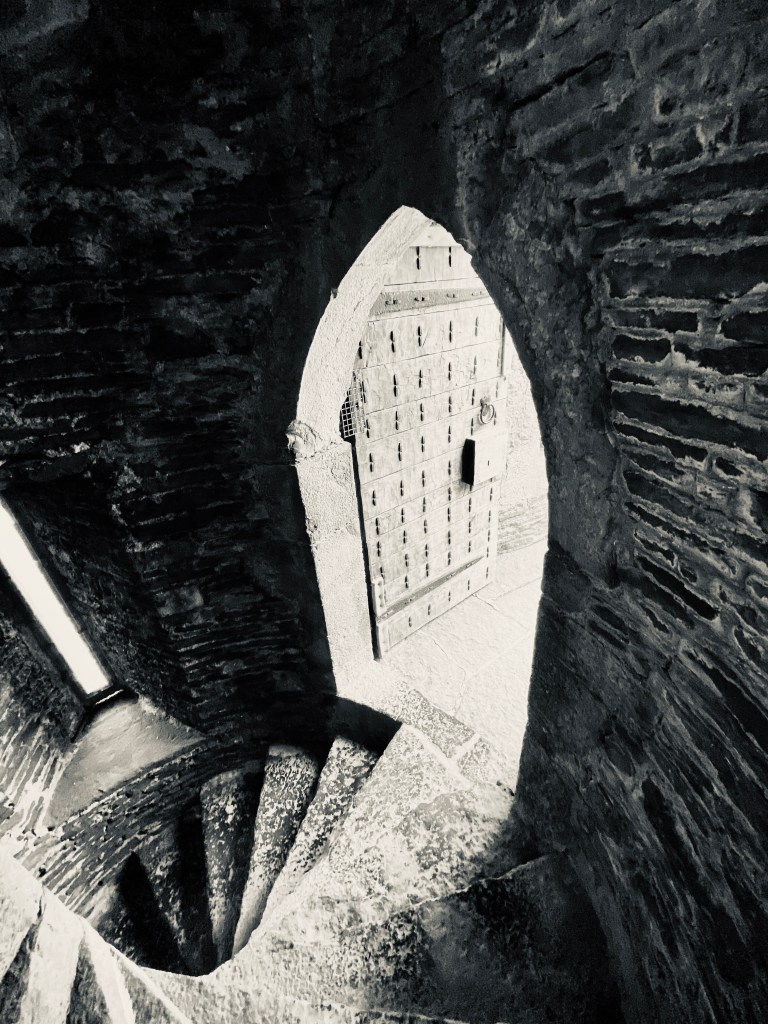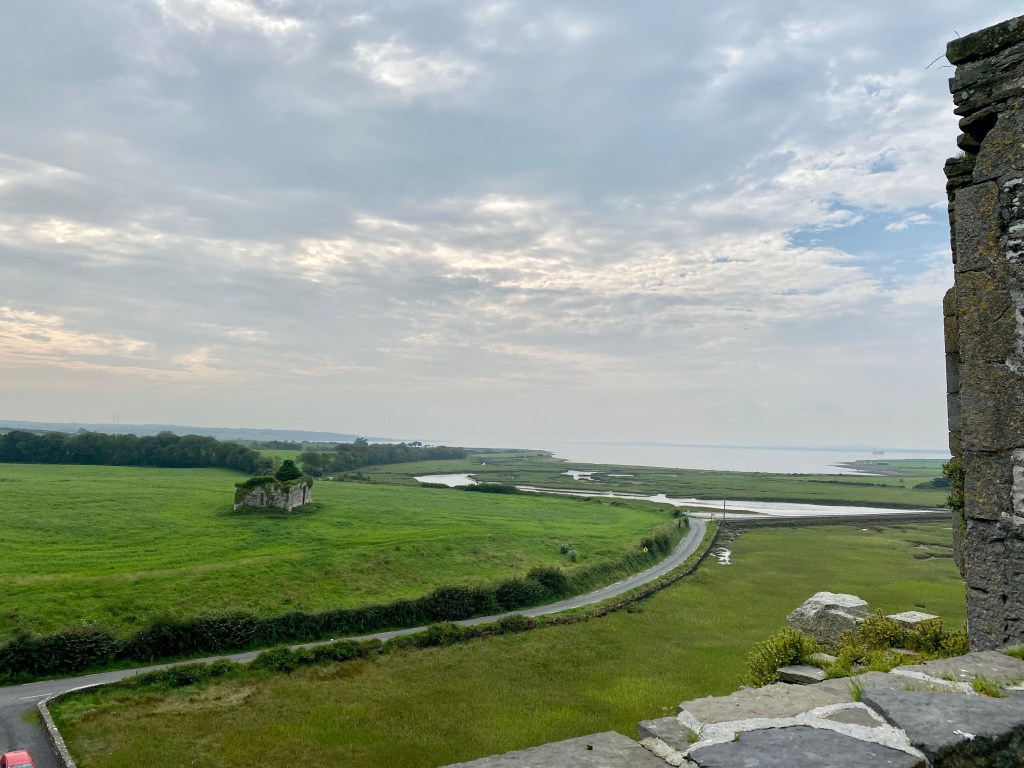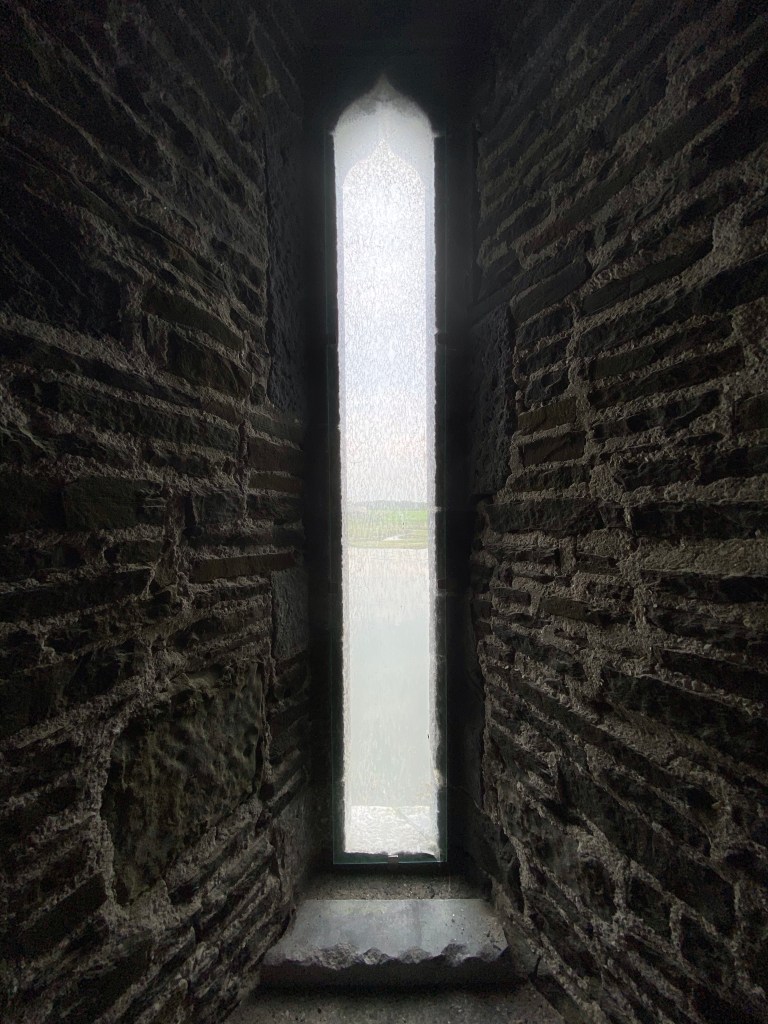
Creation of a Munster Stronghold
The Guardian of the Shannon stands weary yet proud, where the County Kerry banks of Carrig Island meet the flowing waters of the tidal Shannon estuary.
The whole area surrounding the village of Ballylongford in the Kingdom County was under the control of the O’Connor clan. The village itself is known for being the birthplace of world renowned Exorcist, Father Malachi Martin, but the darkness of evil tyranny found its way to the area long before the Jesuit priest was born.
Carrigfoyle is Carraig an Phoill in Irish, translating as ‘Rock of the Hole.’

It was built by Conor Liath O’Connor at the end of the fifteenth century, a stronghold overseeing the shipping lanes into the main port of Limerick city some 40 miles along the river. This meant the O’Connor Kerry clan could board and loot many of the merchant ships due into the Viking capital of Munster.

It was constructed some 86 feet high over 5 levels from limestone. A Bawn was created with a pontoon for landing boats and the surrounding woodland gave added protection. High vaulted ceilings on two levels gave added grandeur and it was finished off with a wide spiral staircase, with 104 steps leading you out onto the battlements and sweeping views of the Shannon estuary and surrounding farmlands.

As well as the main halls, there are several smaller chambers on each floor, more than I have seen in similar guardian towers in the region.

In 1579, as the war on Catholicism was taking hold, Spanish reinforcements arrived at Smerwick Harbour further along the Kerry coastline. This men were papal forces sent to assist the Irish defence during the Desmond Rebellion.
Desmond Rebellion and Bloodshed

Some of these soldiers were ordered down to Carrigfoyle Castle as this was the seat of the Earl of Desmond. An Italian engineer, Captain Julian also arrived to assist in the reinforcement of the critical stronghold.
Lord Chief Justice of Ireland, Sir William Pelham was leading the assault against the Irish Rebellion and had headquartered in Limerick city.
Under the orders of Queen Elizabeth, Easter 1580 saw the English Commander lay Siege to Carrigfoyle Castle. His fleet were positioned within the estuary and in the woodland of Carrig Island and at first were subjected to missiles in the form of boulders and weaponry being fired from the battlements by the men of Desmond.

As time wore on however, the English managed to scale the castle walls with assault ladders and the battle began in earnest. Sir William reported that the waters and castle walls “became slippery with blood”, as naval canons began their bombardment of the fortress.

After two days of siege, the structure began to collapse inwards, crushing many of the soldiers fighting for Irish freedom to death. The remainder try to flee into the shallow waters of the banks of the Shannon and woodland. They did not get far and were slaughtered by the blades of English troops. Captain Julian was hanged just a few days later.

Today Carrigfoyle Castle is eerily quiet, my climb to the top of the battlements solitary and silent. Drips of water gentle cascade down the limestone, caressed by the emerald green moss clinging to the walls of the past.
Carrigfoyle Castle Today

Shadows creep out from the stone, crushing the glimmers of sunlight as the terrified men within the vast structure were crushed by canon fire. On the gentle estuary breeze, historic cries of fear and despair are but a whisper, tossed away, carried over the majestic Shannon and lost to time.


